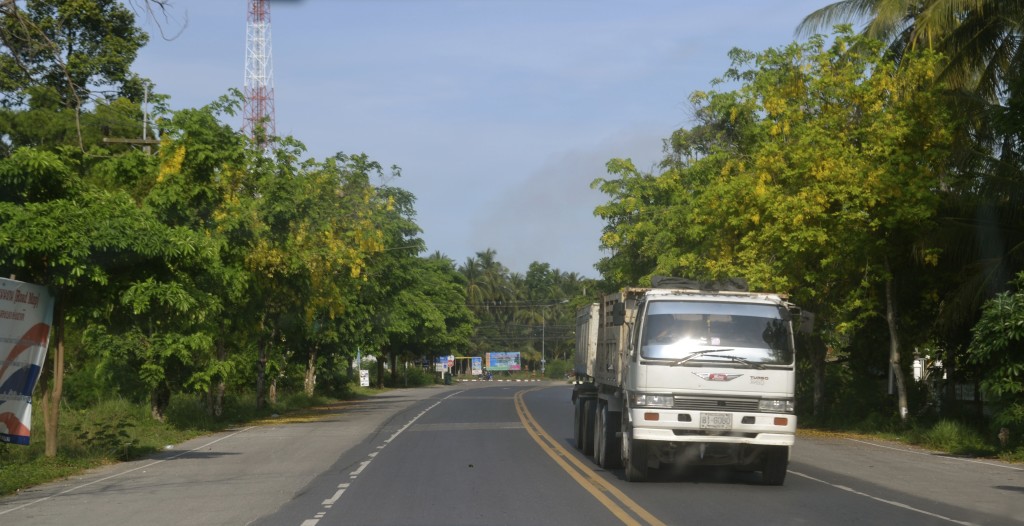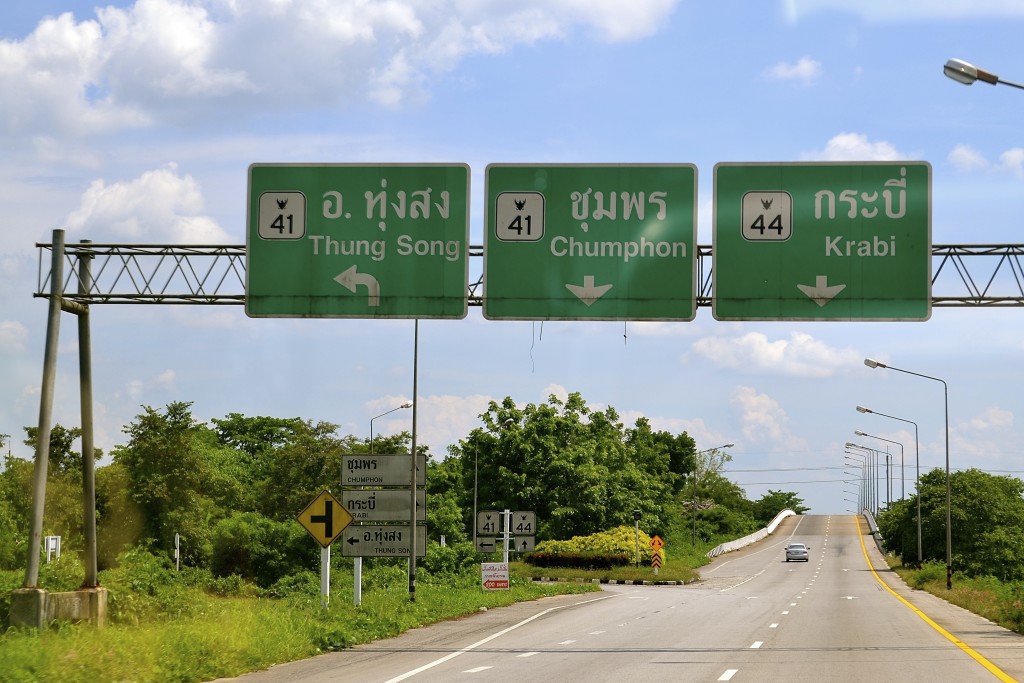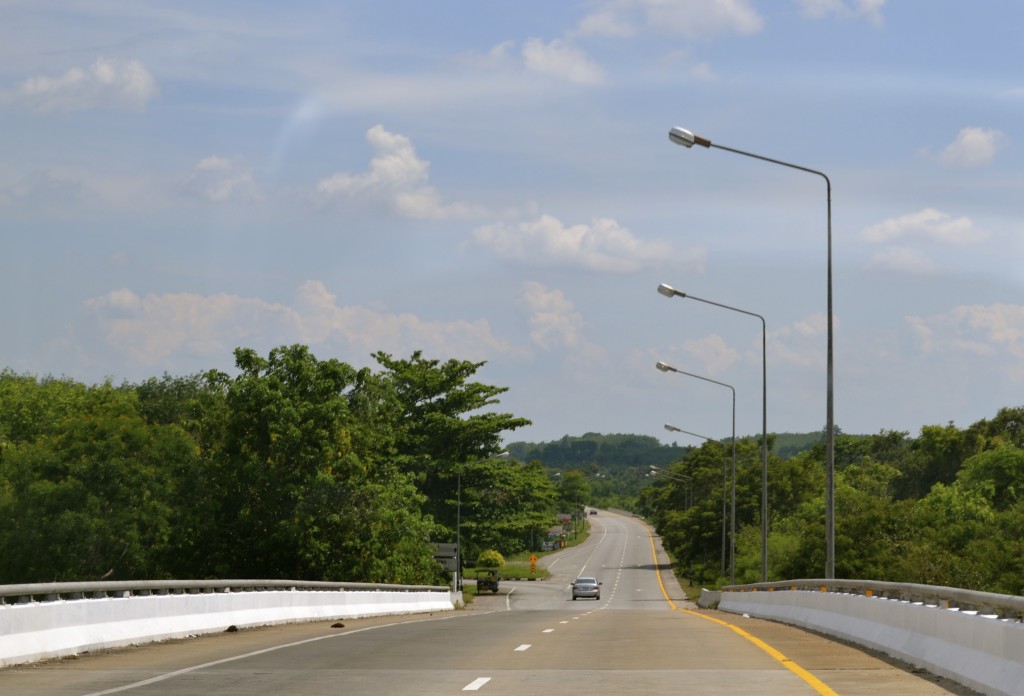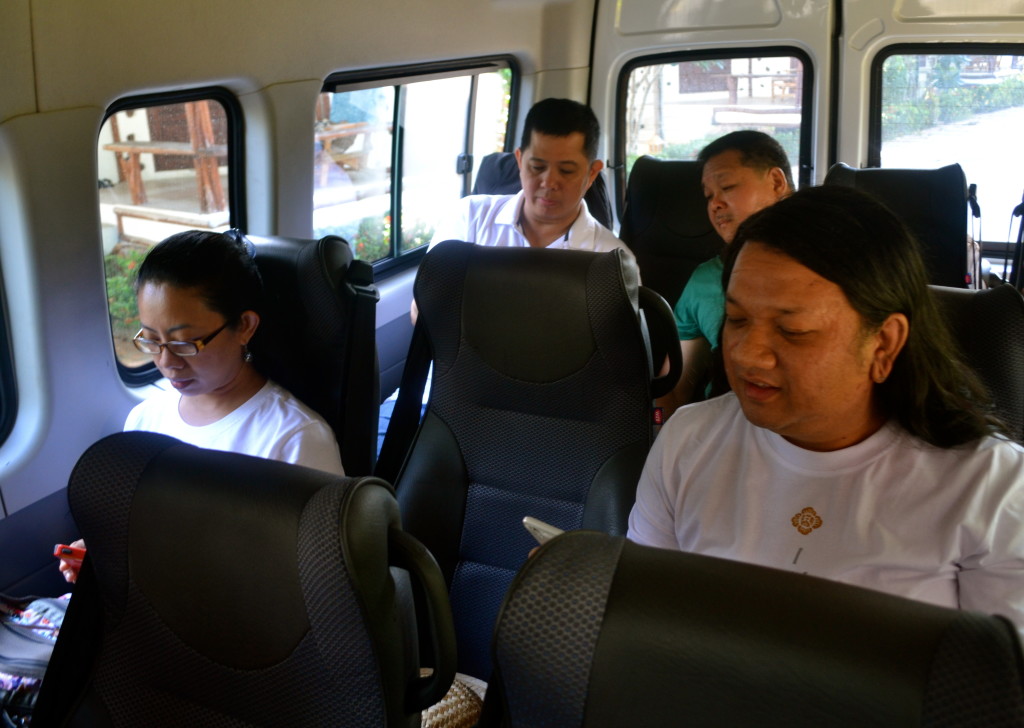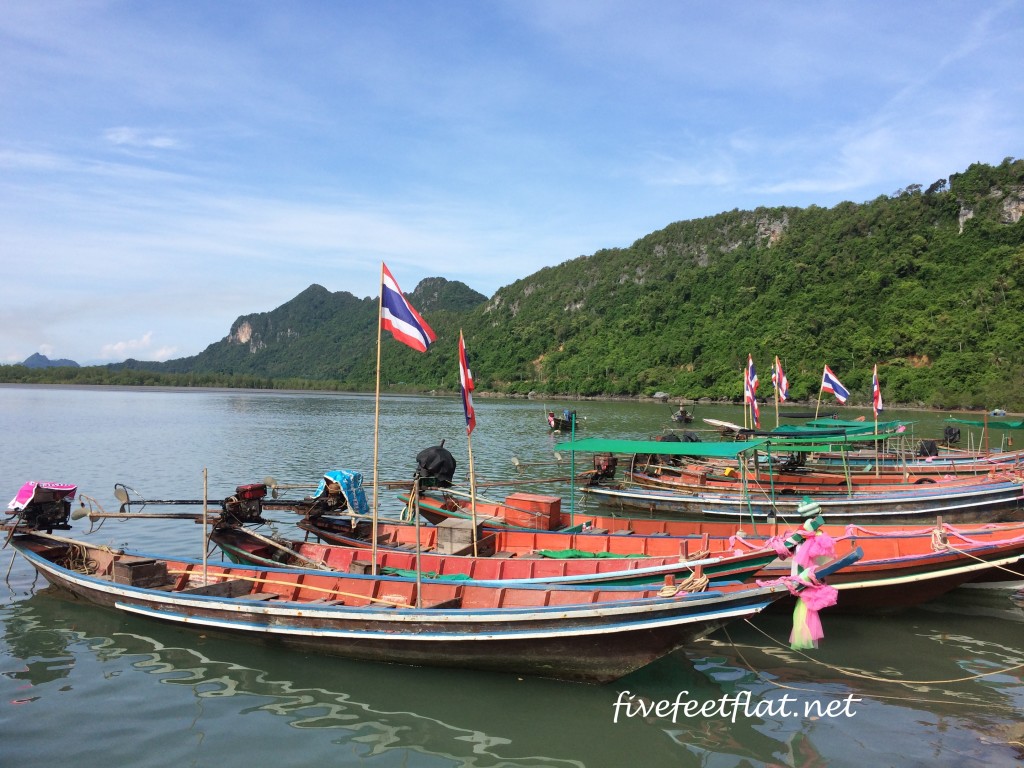Malaysia to Thailand by car
Planes are strange things. They cut short your travel time and make travelling easy, and yet when you fly you lose out on what travelling feels like. You hop on a plane, get served meals on small trays and before long, arrive in a new country with a new time zone. Flights are fun, but on some days I want to feel like I’m really travelling and crossing land.
Today is one of those days. Today, I’m not flying.
Outside my window, wooden houses, towering limestone hills and villagers on motorbikes passed by in a blur as we drove by. Every few hours, I saw shop signboards and banners in a curvy script and knew we were passing a village. What were they selling? God knows. Reading Thai had never been my forte.
Our road trip to Thailand began on a Monday morning no different from other working days. At 8.30 in Kuala Lumpur, the morning traffic is a nightmare and on that day, it made me feel smug. These people were driving to work but within a few hours, I would be in another time zone.
After stopping in Taiping and Gurun, we arrived at the border checkpoint at Bukit Kayu Hitam at 4pm.
Documentation
Flying into Thailand is straightforward where official documents are concerned – the only thing you’ll need apart from your passport is an arrival/departure card. Entering the country with a private vehicle however, involves more paperwork.
When you enter the country by car, you’ll need to complete an additional document with Thai Customs: a vehicle registration form called a Simplified Customs Declaration Form. For this purpose, Thai Customs will need to see your passport, international driver’s licence and the vehicle registration for your car.
If you’re travelling in a group, the person registering the vehicle should be one of the drivers. The completed and stamped Simplified Customs Declaration Form will be returned to you, thereby giving you permission to enter Thailand with your car. This form must be kept safely because it has to be returned to Thai Customs upon your departure from Thailand.
The form sets out clearly the dates of arrival, the particulars of your car and the date by which the vehicle must leave Thailand (within 30 days of arrival). The exit date must be strictly adhered to: the person registering the vehicle must sign a guarantee to pay a penalty if the vehicle doesn’t leave Thailand within the time stated.
The amount guaranteed is calculated based on the taxes and duties to be paid to Customs. In our case, the amount guaranteed was three times the value of the vehicle. There is also a fine of a maximum of 10,000THB if the form isn’t returned to Thai Customs on your departure date.
Once all that is sorted out, you’re good to go and can enter Thailand.
Roads
Driving in southern Thailand will take you on a combination of highways and smaller roads. The Thais drive on the left side.
Just like in rural Malaysia and parts of Southeast Asia, keep an eye out for livestock, running children and motorbikes that dash out of nowhere when you’re driving on small roads.
What are you driving?
I have only one problem when it comes to travel: my back. I love overland trips but I suffer on long train and bus rides because of my bad back. Because of this, I try to make my journeys as comfortable as possible.
The Maxus V80 van we drove to southern Thailand was supplied by Weststar Maxus, a company I had never heard of until the trip. Our van was a three-year-old 12-seater.
Take it from someone who suffers on long-haul flights, long bus rides and bumpy train journeys- despite having to sit for hours, I found the Maxus V80 to be a very comfortable ride.
We were driving up to nine hours daily and yet I felt very little strain on my back. Whatever discomfort I felt was slight compared to what I’ve gone through on shorter trips on less comfortable vehicles. Yes, this was a sponsored trip, but even if it hadn’t been, I would still be writing about how comfortable the entire journey was. The only thing I suffered from on this trip was swollen feet from sitting down for too long.
Director of Operations of Weststar Maxus, Datuk Michael See said like all of their vehicles, the V80 was designed with safety and comfort in mind.
According to Michael See, the V80 was constructed like a European van- with the engine at the front instead of beneath the driver’s seat, like most Asian-built vans. When engines are at the front, there is less risk of the driver’s seat area heating up, which can result in the driver getting tired or sleepy and losing focus.
“There are three elements for the perfect road trip- the most important one is the vehicle you’re driving. After that it’s the state of the driver and the level of comfort your vehicle is able to provide. I think you’ve managed to see this for yourself,” he told me.
My back had no reason to complain thanks to the V80’s comfortable seats, all of which were fitted with seatbelts. The van also had two front row airbags, which were thankfully never employed during the journey.
Maxus vans are used regularly by tour agencies, schools and hospitals for their safety features. I would certainly recommend trying out the Maxus V80 if you’re going on a long drive.
By the time we reached the end of our journey we had clocked some 1,900km from Kuala Lumpur to southern Thailand and back, stopping in cities like Hat Yai, Krabi, Phattalung and Phangnga.
Despite having to sit in a van for six days, I’m not about to change my mind about travelling overland. In travel, there are fewer things more satisfying than crossing land on foot or wheels. You get a real sense of the space you’re moving through and you experience travel more on the ground than in the air.
Even back pain and swollen feet are all part of the experience.
*This is the first in a series of posts on my six-day trip to southern Thailand, made possible by the Tourism Authority of Thailand and Weststar Maxus. As always, all opinions are mine.
© 2015, Anis. All rights reserved.

